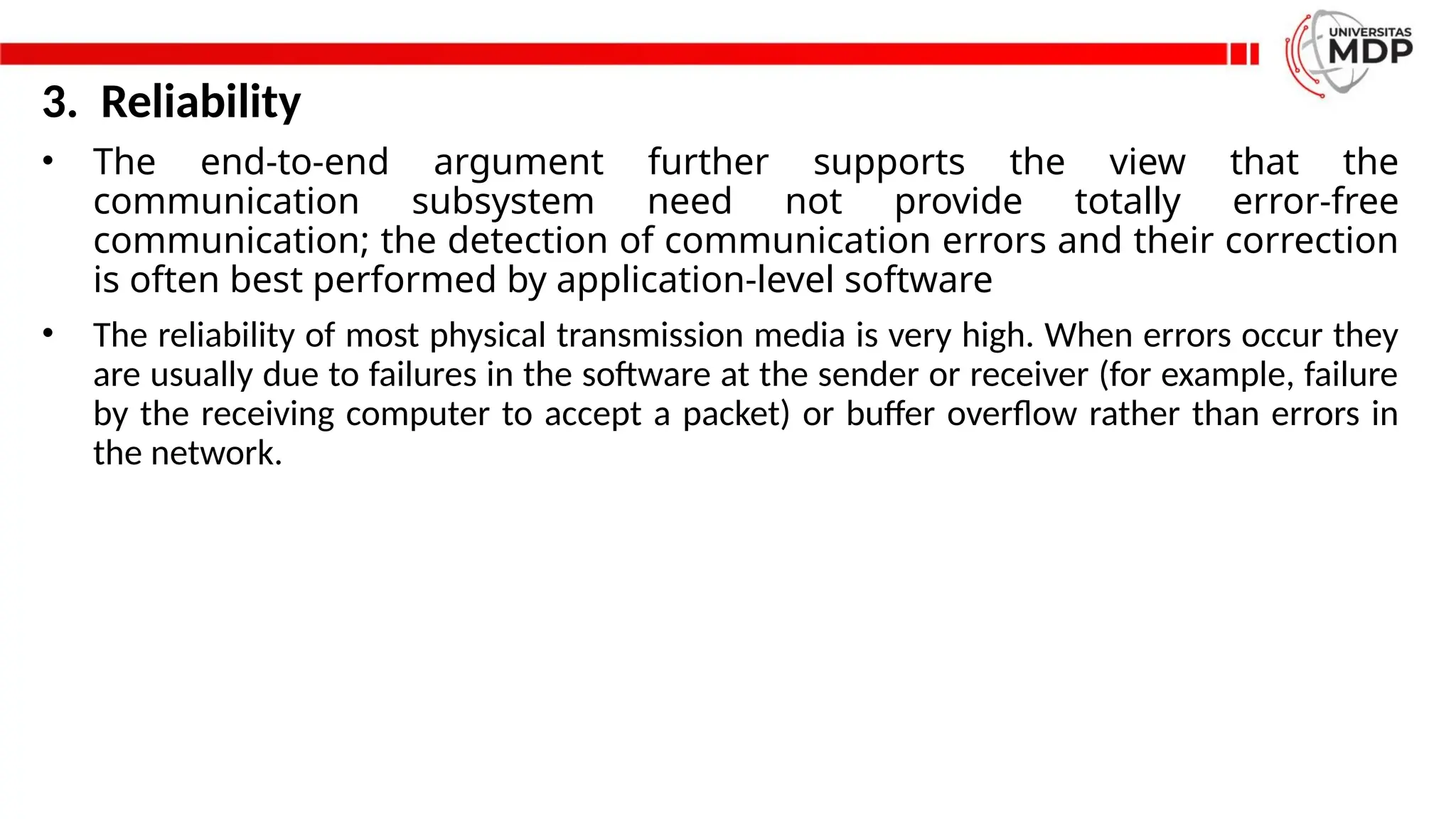The document discusses the principles and technologies behind distributed systems and networking, including types of networks (PANs, LANs, WANs, MANs, and internetworks) and their performance characteristics, such as reliability, scalability, and security. It highlights the importance of protocols in facilitating communication between processes, detailing aspects like packet delivery and addressing. Furthermore, it addresses the impact of network designs on quality of service and the challenges posed by mobile devices in maintaining efficient connectivity.





![• The total system bandwidth of a network is a measure of throughput – the total volume
of traffic that can be transferred across the network in a given time.
• local area network technologies, such as Ethernet, the full transmission capacity of the
network is used for every transmission and the system bandwidth is the same as the
data transfer rate.
• wide area networks messages can be transferred on several different channels
simultaneously, and the total system bandwidth bears no direct relationship to the
transfer rate. The performance of networks deteriorates in conditions of overload –
when there are too many messages in the network at the same time
• The precise effect of overload on the latency, data transfer rate and total system
bandwidth of a network depends strongly on the network technology.
• On the Internet, round-trip latencies are in the 5–500 ms range, with means of 20–200
ms depending on distance [www.globalcrossing.net], so requests transmitted across the
Internet are 10–100 times slower than those sent on fast local networks.](https://image.slidesharecdn.com/pertemuan3internetandinternetworking-241026030423-6b7f494f/75/Pertemuan_3-Internet-and-Internetworking-pptx-6-2048.jpg)

















